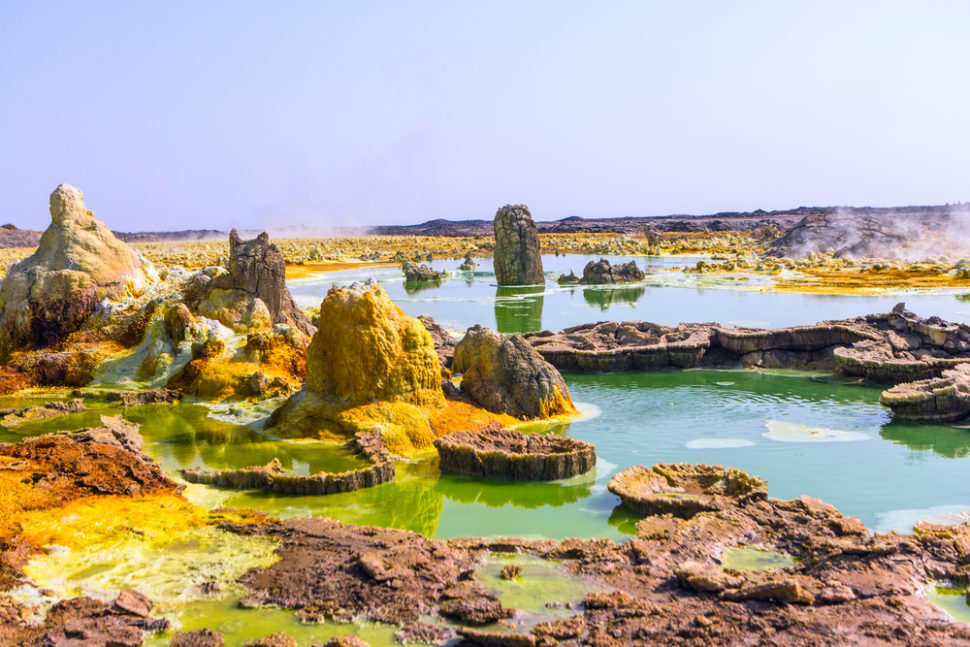Microorganisms have an exceptional ability to adapt to the most extreme environments on the planet. But, there’s still an uninhabitable place on Earth, even for the microbes.
You’ll find the infernal landscape of Dallol in the Ethiopian depression of Danakil – it’s a volcanic crater that’s full of salt. Between the toxic gases and boiling water, the region makes for one of the most horrid areas on the planet.
It consists of hypersaline and hyperacid pools with negative pH values. Also, Dallol’s daily temperature in Winter can exceed 45 degrees celsius.
This results in a multi-extreme environment – scorching, saline, and acidic at the same time. Yet, a study published earlier in the year suggests that specific microorganisms can develop in this impossible condition.

At the time, the authors presented the region as an example of the limits that life can support. They even suggested that Dallol is a terrestrial analog of early Mars.
However, a recent study by a French-Spanish team of scientists concludes otherwise.
In a statement to the press, scientist from the French National Centre for Scientific Research (CNRS), Lopez Garcia said:
“After analyzing many more samples than in previous works, with adequate controls so as not to contaminate them and a well-calibrated methodology, we have verified that there’s no microbial life in these salty, hot and hyperacid pools or the adjacent magnesium-rich brine lakes.”
Here’s how the researchers reached their conclusion.
Finding an Uninhabitable Place on Earth
The researcher found a great diversity of halophilic archaea in the parts of Dallol. They also found the primitive salt-loving organisms in the saline canyons around the hydrothermal site.
That’s it. Not only were the organisms absent in the hyperacid and hypersaline pools, but the researchers didn’t find traces in the Black and Yellow lakes of Dallol.
Various test methods confirmed the findings. Example of the explored processes include:
- Microbial culture attempts
- Chemical analysis of brine
- Sequencing of genetic markers to detect and classify microorganisms
- Fluorescent flow cytometry
- Scanning electron microscopy combined with X–ray spectroscopy
Garcia points out that some silica-rich Dallol mineral precipitates could look like microbial cells under a microscope. Perhaps, the previous studies had seen these mineral particles and interpreted them as life, he said.
Also, the researchers discovered that other uninhabitable places like the Dallol pool exist on Earth.
Although these regions contain liquid water, they remain sterile. This proves that the presence of liquid water on a planet does not imply that it supports life.



















Wow